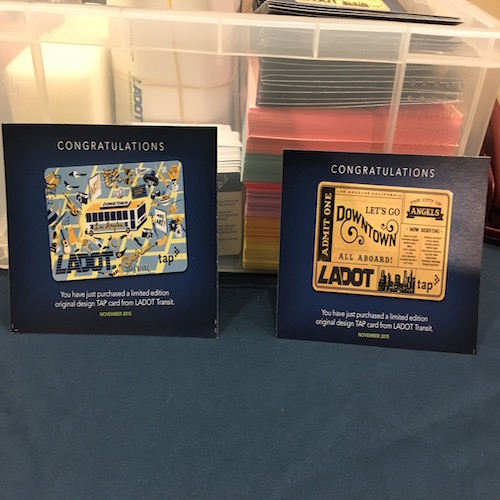At the heart of Los Angeles’ historic core stands the Spring Arts Tower. The eight-floor building is home to a variety of businesses ranging from a bank vault inspired cocktail lounge to film sets and most notably, The Last Bookstore, one of the few remaining bookstores in Los Angeles. Just one floor above the piles of vintage and rare books, however, is a space which serves a much different purpose.
When Josh Spencer, bookstore owner, decided to develop half of the mezzanine level as part of an expansion, the remaining area was converted into studios for five artists who previously held workspaces on other floors of the building. The mezzanine, referred to by its tenants as the “Spring Arts Collective,” is an arguably unconventional space. With windowed studios, wide-open doors and a gallery which integrates the work of several artists, the mezzanine bears little resemblance to the other salons on Gallery Row. The open floor plan has fostered a unique environment which is beneficial to both creative and entrepreneurial ventures. Although dissimilar in age, experience and artistic style, the artists who inhabit the space all agree on one thing: relocating to the mezzanine has had incomparable effects on their careers.
For Andrea Bogdan, the move from her eighth-floor studio was motivated in part by the ambiance of the workrooms. “I had always wanted a street view,” she confessed. But after three years of creating alongside the other tenants, she has found the benefits of the space have far exceeded a better view. Bogdan calls herself the youngest of the five artists “not in age, but in the number of years that I've been serious about my art practice,” she explained. She revealed that she relocated her studio to the space above The Last Bookstore with hopes of learning from and sharing ideas with the other mezzanine-level artists and has not been disappointed. “They have been wonderful mentors and supporters,” she said. David Lovejoy, who calls himself a “thing maker,” agreed that the space has cultivated an open forum of conversation among the artists. “The collective brings counsel, where we bounce ideas off of each other,” he said.
With the increased dialog has come artistic collaboration, despite the seemingly inharmonious styles and mediums of the tenants. Lovejoy, who often highlights 1930s furniture and machinery, and Jena Priebe, who works primarily with organic material, have teamed up for several projects since moving to the mezzanine. It takes no more than a stroll around the bookstore to realize the extent of the duo's success. “Diagnosis,” a striking compilation of floating novels, typewriters and a vintage bookcase, is one of Lovejoy and Priebe’s many installations on display.
The space has also allowed the tenants to form relationships with other creative professionals. Bogdan says musicians, poets, animators and writers wander upstairs to the mezzanine because of its proximity to the bookstore. Often, the tenants will invite the artists to show their work in the Spring Arts Gallery. To Bogdan, the benefits of these interactions are advantageous, “I love collaborating with the artists that I invite and every time I do it, I learn something new and make new friends,” she said.
In addition to the creative benefits, Lovejoy said he has noticed a remarkable increase in sales since he relocated to the mezzanine three years ago. He credits this surge to the space’s accessibility. Lovejoy explained that the security clearance required to visit his eighth-floor studio limited traffic to his gallery. “Folks came by invitation only,” he added. Liz Huston, who describes her artistic style as a mix between surrealism and symbolism agreed that the exposure has been invaluable. She said that the location has given her “a stage upon which to exhibit my artworks and an audience to view and purchase it.”
After only three years in the mezzanine, the artists share the belief that the move downstairs has sparked remarkable personal growth. Bogdan, who relocated to the mezzanine with hopes of learning from sharing ideas with more experienced artists has recently found herself mentoring others. Most recently, she worked with a 12-year-old girl whose art now hangs in a gallery in Gardena. “My purpose has shifted from taking inspiration to giving inspiration,” she said. Huston who generally tends to be a solitary creator said that she is amazed by what she has learned from collaborating on projects with other artists.
November marked the third anniversary of the Spring Arts Collective and the artists have no plans of slowing down. For Lovejoy, this spring will bring mountains of clay work. “Literally, a ton,” he clarified. Bogdan instead plans on experimenting in fashion and creating what she calls “some really large and audacious pieces.” As for Huston, her plans are simple: to keep creating. “At the end of the day, for me it’s all about the art,” she said.


